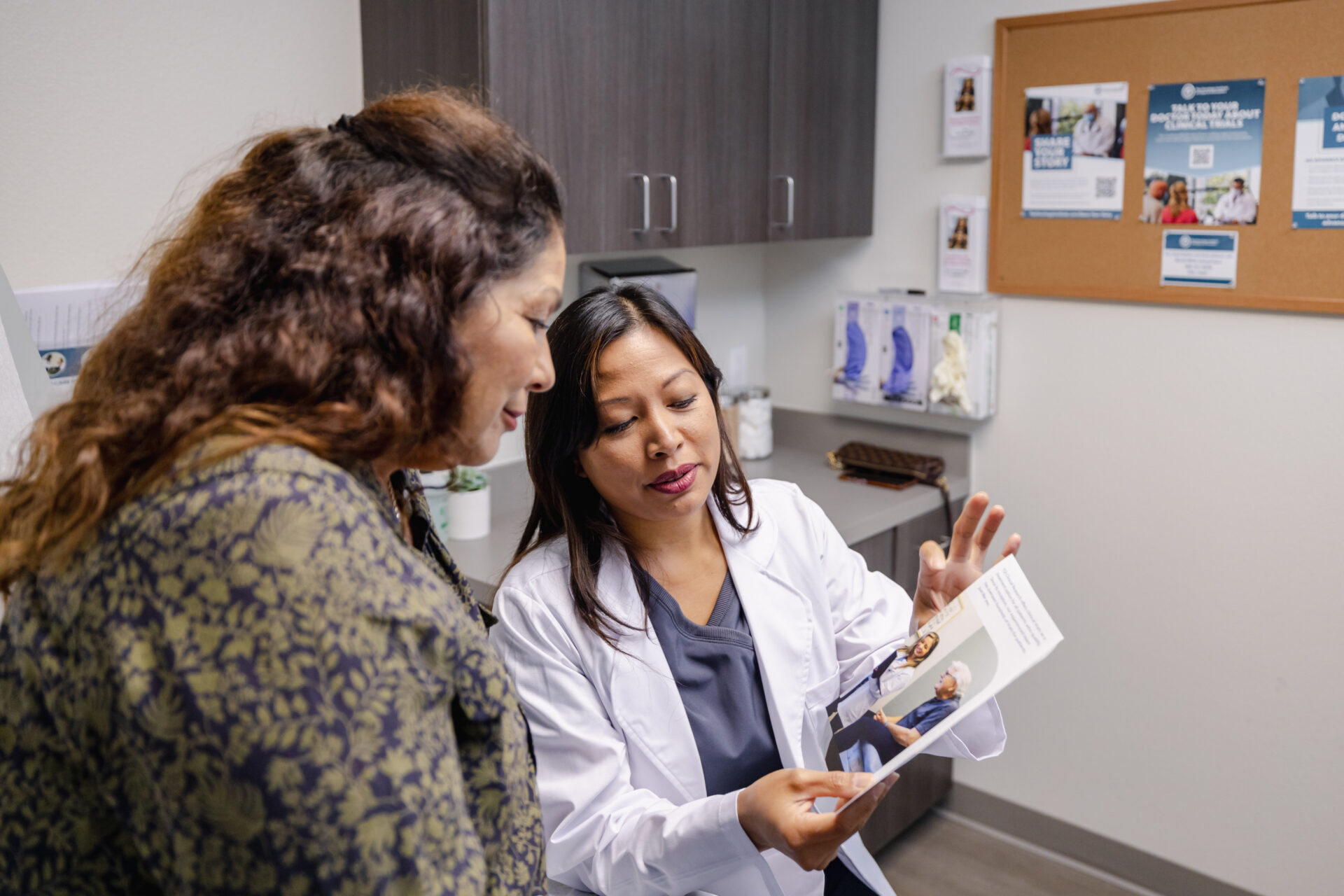Our chemotherapy involves the use of targeted, powerful drugs that can slow or kill the growth of cancer cells. We offer chemotherapy for breast and gynecologic cancer intravenously, orally, or through direct injection into the affected area.

With dedicated women’s health clinics in Long Beach and Whittier, California, and now expanding into Oregon with locations in Portland, Salem, and Roseburg (opening November 2025), we bring specialized cancer care closer to the communities we serve. Our physicians stay at the forefront of the latest advancements in treatment options, allowing for precise, comprehensive, and compassionate care.
Subspecialists like Dr. Oranus Mohammadi and Dr. Nattamol Hosiriluck provide clinical expertise in women’s oncology, helping patients navigate every stage of their journey with advanced therapies and personalized support.
Women’s cancer care is a unique specialty that focuses on the cancers that directly impact women, such as breast, ovarian, and cervical cancers. Our board-certified oncologists and cancer specialists, like Dr. Mohammadi, have extensive training and experience in the early detection and treatment of women’s cancers.
When you visit our Whittier Medical Oncology clinic, our Long Beach Radiation Oncology clinic, or our new Oregon sites in Portland, Salem, and soon Roseburg, we offer specialized women’s health services, including:

Distinctive Care Approach
Since 2007, The Oncology Institute has provided personalized treatment plans with therapies tailored to the individual’s cancer type, symptoms, and side effects. With the launch of our women’s cancer care clinics in Long Beach and Whittier, we can provide hyper-personalized care, support, and therapies unique to women’s needs.
Our distinctive care approach treats the whole person, including their mind, body, and spirit. We understand that a diagnosis of cancer can be very overwhelming for patients and for their families. We stress the importance of emotional side effects that cancer can have on women, providing an understanding of the diagnosis and also a deep knowledge about the treatment to help patients reduce their anxieties.
We are proud to offer the treatment and therapies you need throughout your cancer journey.
Our chemotherapy involves the use of targeted, powerful drugs that can slow or kill the growth of cancer cells. We offer chemotherapy for breast and gynecologic cancer intravenously, orally, or through direct injection into the affected area.
This prevailing treatment utilizes high-energy particle waves to shrink tumors and destroy or damage cancer cells. It is often used for treating breast and cervical cancer.
Hormones like estrogen are needed for certain types of women’s cancer to grow. Hormone therapy blocks the amount of hormones a patient’s body produces to slow or stop the spread of these types of cancers.
This treatment helps boost the body’s natural defenses to fight cancer and improve immune system function.
Used most often in the treatment of breast cancer, targeted therapy uses specialized drugs that can identify and attack the proteins and molecules of cancer cells, stopping the disease from growing and spreading while limiting harm to healthy cells.

Dr. Mohammadi and Dr. Hosiriluck and the other providers at our women’s care clinics look forward to continuing advancements in the treatment of women’s cancer. This includes:
At The Oncology Institute, we believe in continually changing oncology for the better. With the opening of our specialized women’s cancer care clinics, our subspecialists can address each woman’s unique cancer journey.
Along with cutting-edge, evidence-based cancer care, here are just a few ways we offer women a different treatment experience.
Early detection is one of the biggest challenges in the field of women’s cancer care. We have lots of patients with limited resources who don’t undergo appropriate screening, and they ignore the symptoms that they have.
Our advanced diagnosis and screening techniques allow us to identify the earliest stages of women’s cancer before malignant cells have a chance to spread to other parts of the body.
Along with our two women’s cancer care clinics, The Oncology Institute has multiple locations throughout California, Nevada, Arizona, and Florida. No matter where you live or your unique situation, we have providers available to help.
Education – and understanding the symptoms that are related to the cancer – is very important. Our providers work with patients and families to educate them step by step about their diagnosis and treatment plans.
Cancer care is more than a medical remedy. It’s about having a more peaceful journey during the course of treatment. Along with our advanced therapies, we offer emotional and mental health support. Patients can join support groups, or our providers can coordinate their care with a psychiatrist or therapist who can address the toll this disease takes.
The experienced health care providers at The Oncology Institute are some of the finest cancer specialists in the country, especially in the field of women’s cancer care.
When we diagnose our patients with cancer, it’s a multidisciplinary field that requires a multidisciplinary approach. Our team seamlessly works together to ensure each patient receives optimal care.
We are proud to offer a distinguished clinical trials program for patients with complicated diagnoses or those who experience treatment failures. These opportunities allow patients to get the benefit out of treatments that are not available to everyone.
NCT04829604
Request InformationD8535C00001
Request InformationNCT05629585
Request InformationNCT05747794
Request InformationNCT05593094
Request Information
Our mission at The Oncology Institute is to provide our patients with the education, care, support, and therapies they need to feel empowered as they undergo breast or gynecologic cancer treatment.
When you make an appointment with TOI’s Cancer Center for Women, you’ll experience unrivaled quality of care, skilled medical expertise, state-of-the-art facilities, and a unique emphasis on the mental, physical, and spiritual aspects of cancer treatment.
For comprehensive breast or gynecologic cancer care, request an appointment with The Oncology Institute today.